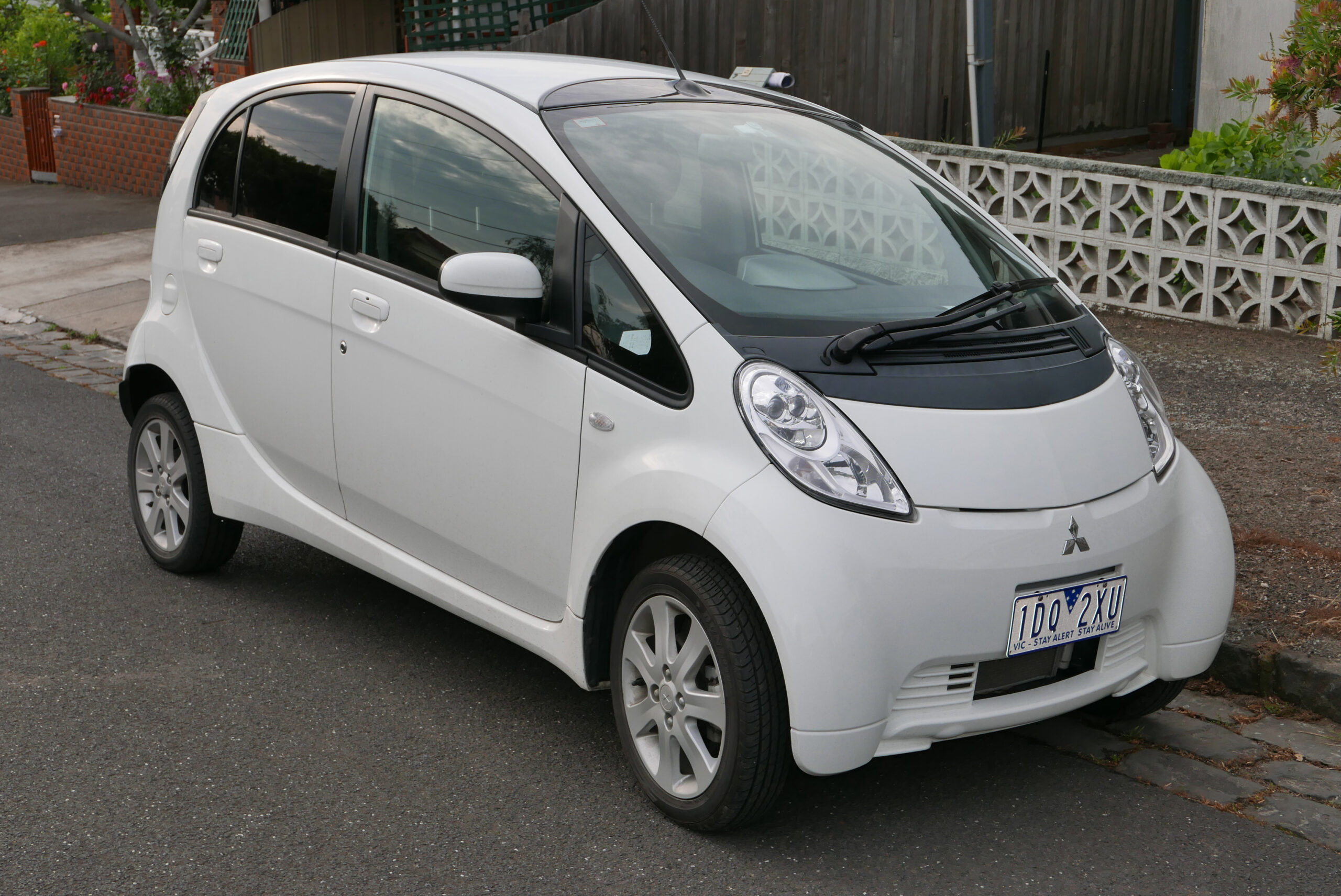The story of the Mitsubishi i-MiEV serves as a cautionary tale in the automotive industry about being first to market versus being right for the market. Despite earning the distinction as the world’s first modern highway-capable mass production electric car, this compact electric vehicle ultimately failed to capture consumer hearts or wallets, teaching valuable lessons about the delicate balance between innovation, pricing, and practicality.
The Promise of Electric Pioneer
When Mitsubishi launched the i-MiEV in Japan in 2009, the automotive world was watching with keen interest. This wasn’t just another concept car or limited production experiment—it represented a genuine attempt to bring electric vehicles to the masses. The company had high hopes for their innovative adaptation of the popular Japanese kei car, betting that American consumers would embrace this ultra-efficient urban transportation solution.
The vehicle’s engineering was actually quite clever. The gasoline version had its three-cylinder engine located flat under the rear seat, driving the rear wheels, giving a longer cabin within the short length. The i-MiEV swapped a 16-kilowatt-hour lithium-ion battery pack and an electric motor into the same space. This innovative packaging allowed Mitsubishi to offer surprising interior space within an extremely compact footprint.
Technical Specifications: Innovation with Limitations
The i-MiEV’s technical foundation was both its strength and its weakness. Understanding the specifications helps explain why this vehicle struggled to find acceptance in the broader American market.
Performance and Efficiency

The electric drivetrain consisted of a single permanent magnet synchronous motor mounted on the rear axle with a rated peak power output of 49 kW (66 hp) and delivered 180 N⋅m (130 lbf⋅ft) of torque. While these numbers might seem modest compared to today’s electric vehicles, the i-MiEV achieved an impressive 112 MPGe efficiency rating that is still out of reach by many modern electric vehicles.
However, performance was genuinely underwhelming. The i-MiEV takes 15 seconds to get from zero mph to 60 mph, making it feel sluggish compared to conventional vehicles. The top speed of about 80 mph further limited its highway capability, though this was partially intentional given its city-focused design.
Battery Technology and Range Issues
The heart of the i-MiEV’s problems lay in its battery system. The original 16-kWh battery that was rated at 62 miles (or 59 miles, depending on the year) of single-charge range under ideal conditions simply wasn’t sufficient for most American driving patterns. Later versions featured a 14.5 kWh battery, which actually reduced the already limited range.
Real-world experience revealed even more concerning limitations. During our year with that EV, we found that the Leaf had a realistic range of 86 miles with our driving habits, while the i-MiEV’s range is EPA-rated at 62 miles, although we generally got 56 miles. For many owners, the actual usable range was even lower, particularly in challenging weather conditions.
The Pricing Problem: Premium Costs for Basic Transportation
Perhaps nothing doomed the i-MiEV more than its pricing strategy. When it debuted in the United States for the 2012 model year, My i-MiEV SE stickered for about $32,000 without destination fees back in 2012. That’s too much money for a car that takes 15 seconds to get from zero mph to 60 mph and can only do 62 miles under ideal conditions.
This pricing positioned the i-MiEV as a premium purchase despite offering basic transportation. Even with the later reduced pricing to $23,845 before federal and local incentives, the value proposition remained questionable for most consumers. The vehicle was asking buyers to pay a significant premium for severely limited capability.
Market Reception and Sales Reality
The harsh reality of market acceptance became evident through dismal sales figures. Over seven years (and five model years, with 2013 and 2015 skipped altogether), Mitsubishi sold only 2,108 of the little electric cars in the U.S. This represents an average of barely 300 vehicles per year across the entire American market.
Consumer reviews reflected the mixed reception. While some praised specific aspects—This is cheapest all-electric car available—the overall assessment was damning: the tradeoff is it’s slow, clumsy, stiff riding, and spartan inside. Consumer Reports particularly criticized the vehicle, calling it a “glorified golf car” for its underwhelming performance.
Real-World Ownership: When Less Is Sometimes Enough
Despite its market failure, the i-MiEV found its niche among a small group of dedicated users who understood its limitations and worked within them. Modern perspective offers interesting insights into the vehicle’s actual utility. At $3,500, though, it’s a lot more compelling. From flat to full, the i-MiEV costs about a dollar to recharge with my current electricity rates.
For certain use cases, particularly urban commuting with predictable daily distances, the i-MiEV’s limitations became manageable. The i-MiEV’s previous owner was an elderly lady who only drove to church, the grocery store, and to see her grandkids across town. This represents the vehicle’s ideal customer profile—someone with modest transportation needs who valued efficiency over performance.
Technical Problems and Reliability Concerns

Beyond the fundamental limitations of range and performance, the i-MiEV suffered from specific technical issues that further undermined consumer confidence. According to CR, one of the main issues was related to the brake assist vacuum pump. Water could penetrate this pump, leading to corrosion and eventual failure of the brake vacuum pump.
Battery degradation also proved problematic for long-term ownership. The battery has degraded and left me with about 72 percent, or 11.5 kWh, of total battery capacity. Realistically, the i-MiEV in its current state is good for about 45-55 miles of mild city driving with minimal HVAC usage before it’s out of juice.
Lessons from Failure: What Went Wrong
The i-MiEV’s market failure offers several crucial lessons for automakers entering the electric vehicle space. The primary issue wasn’t the technology itself—the efficiency achievements were genuinely impressive—but rather the mismatch between product capabilities and market expectations.
Pricing proved particularly problematic. Asking consumers to pay premium prices for severely limited capability created an almost impossible sales proposition. The vehicle’s tiny size—it remains the only kei car adapted for the U.S. market in recent decades—and its low power and 62-mile range rating made it just too limited for U.S. use.
The End of an Era
The i-MiEV has been discontinued for 2018, marking the end of Mitsubishi’s first serious electric vehicle effort. While the company has since focused on plug-in hybrid technology with vehicles like the Outlander PHEV, the lessons from the i-MiEV experience continue to influence electric vehicle development across the industry.
Despite its commercial failure, the i-MiEV deserves recognition for its pioneering role. As we have to tip our hat to the cheerful little i-MiEV as it exits the stage. Sometimes, a little too little and a little too early doesn’t quite work. But it had a good run, and its role as a global electric-car pioneer seems secure.
Mitsubishi i-MiEV Specifications
| Specification | Value |
|---|---|
| Battery Capacity | 16 kWh (early models), 14.5 kWh (later models) |
| Motor Power | 49 kW (66 hp) peak, 35 kW (47 hp) continuous |
| Torque | 180 N⋅m (130 lb-ft) |
| EPA Range | 62 miles (early), 59 miles (later) |
| Real-World Range | 45-56 miles typical |
| 0-60 mph | 15.9 seconds |
| Top Speed | 80 mph |
| Efficiency | 112 MPGe |
| MSRP (2012) | $32,000-$35,065 |
| Final MSRP | $23,845 |
| Total US Sales | 2,108 units (2012-2017) |
| Charging Time | 7 hours (240V), 14 hours (120V) |
Frequently Asked Questions
Why did the Mitsubishi i-MiEV fail in the market? The i-MiEV failed primarily due to its high price relative to limited capability. At over $30,000 initially, it offered only 62 miles of range and slow acceleration, making it impractical for most American consumers.
Was the i-MiEV really the first mass-production electric car? Yes, the i-MiEV was the world’s first modern highway-capable mass-production electric car, launching in Japan in 2009, about a year before the Nissan Leaf.
How much does it cost to replace an i-MiEV battery? Battery replacement costs around $1,500 including labor, with the battery carrying an 8-year/100,000-mile warranty when new.
ALSO READ: MG4 Excite 51: $34,990 EV with 405 km Range

